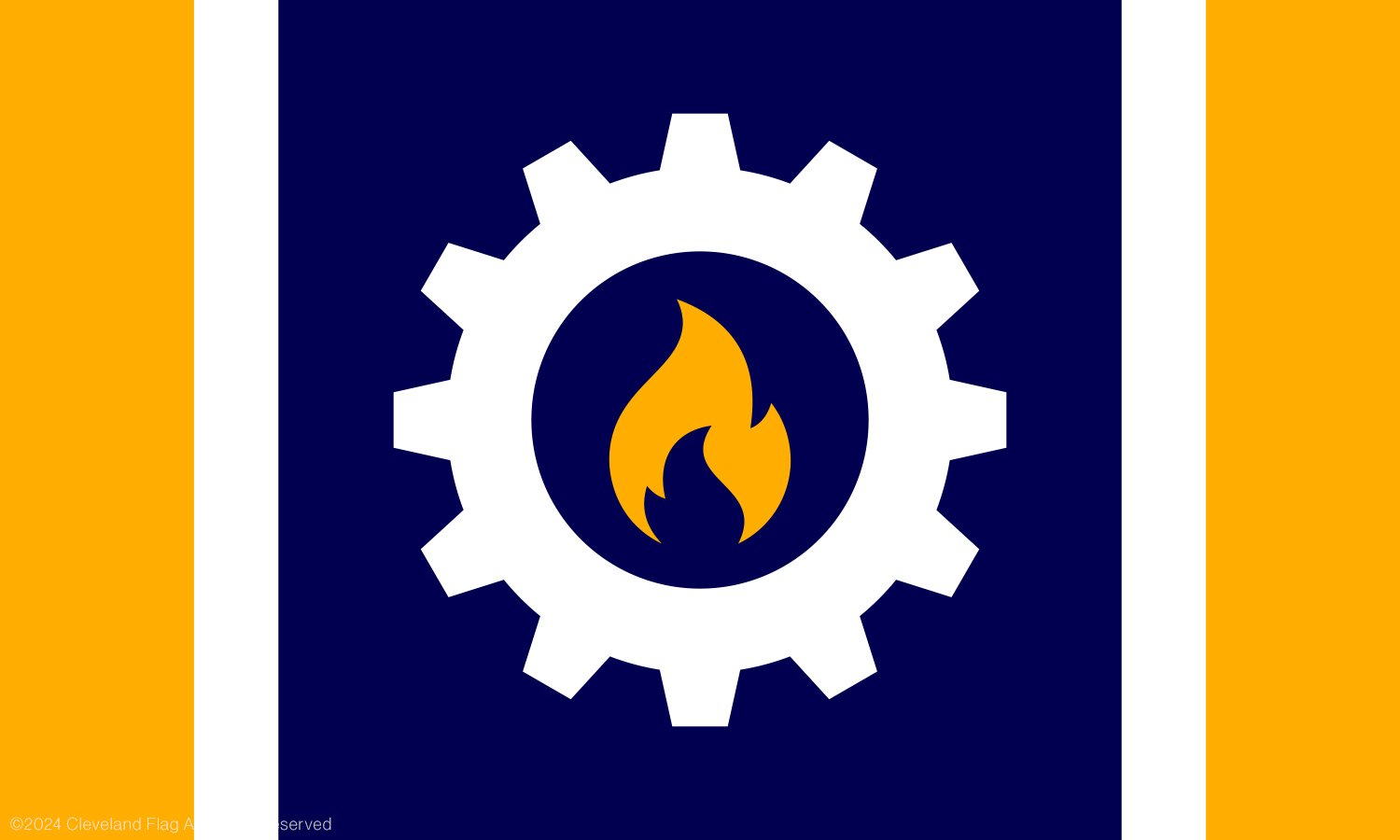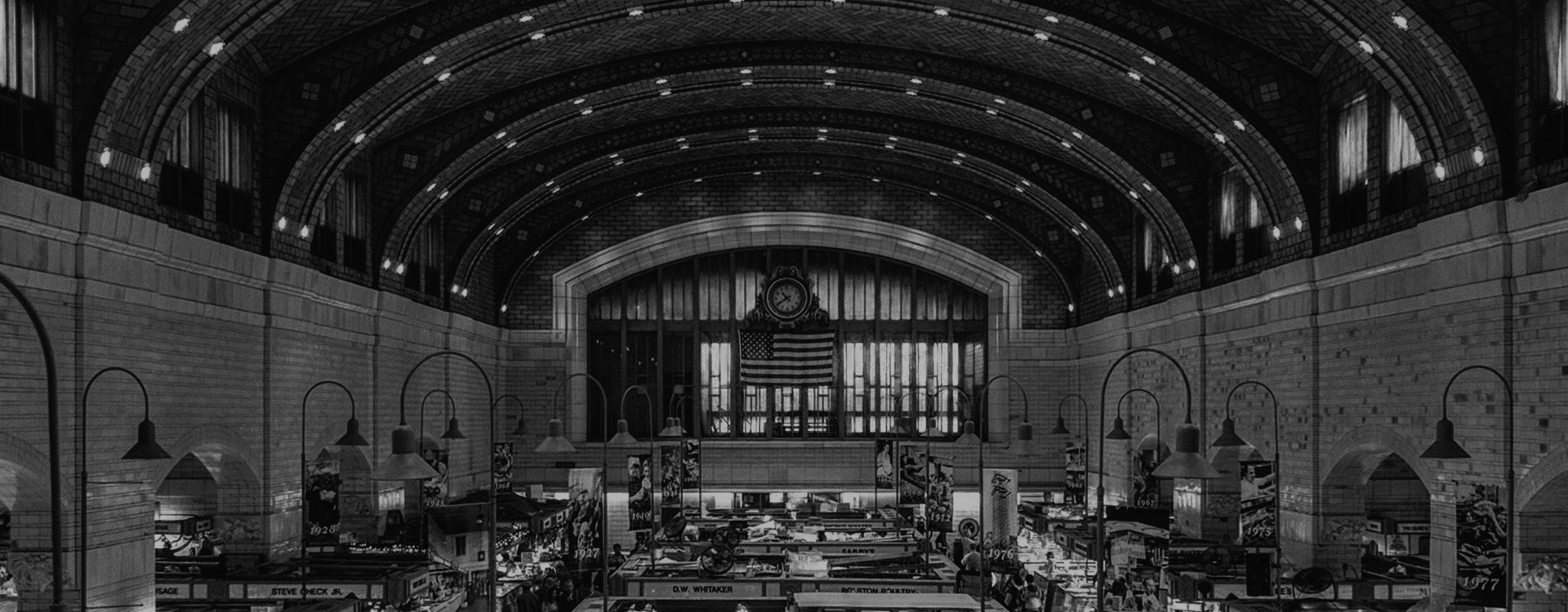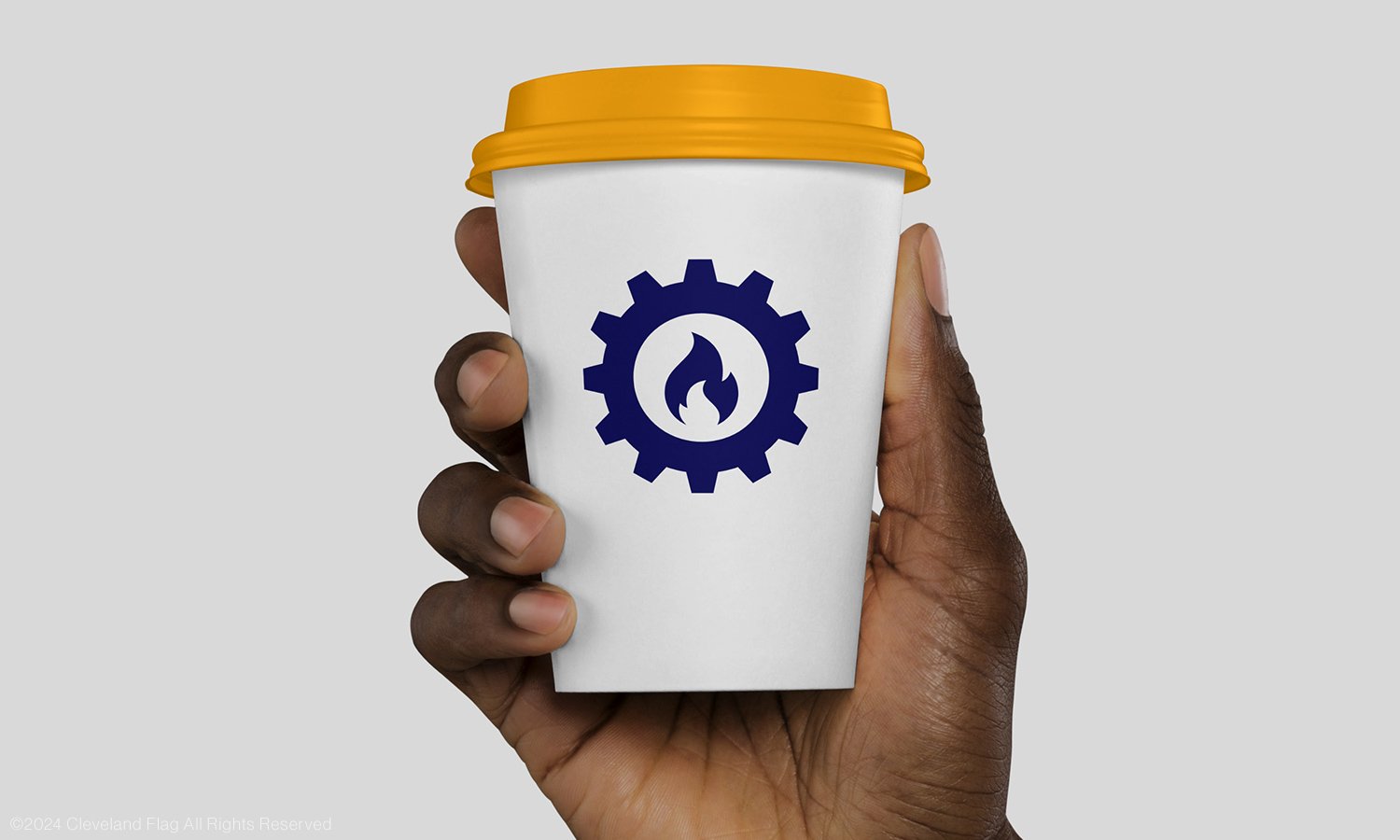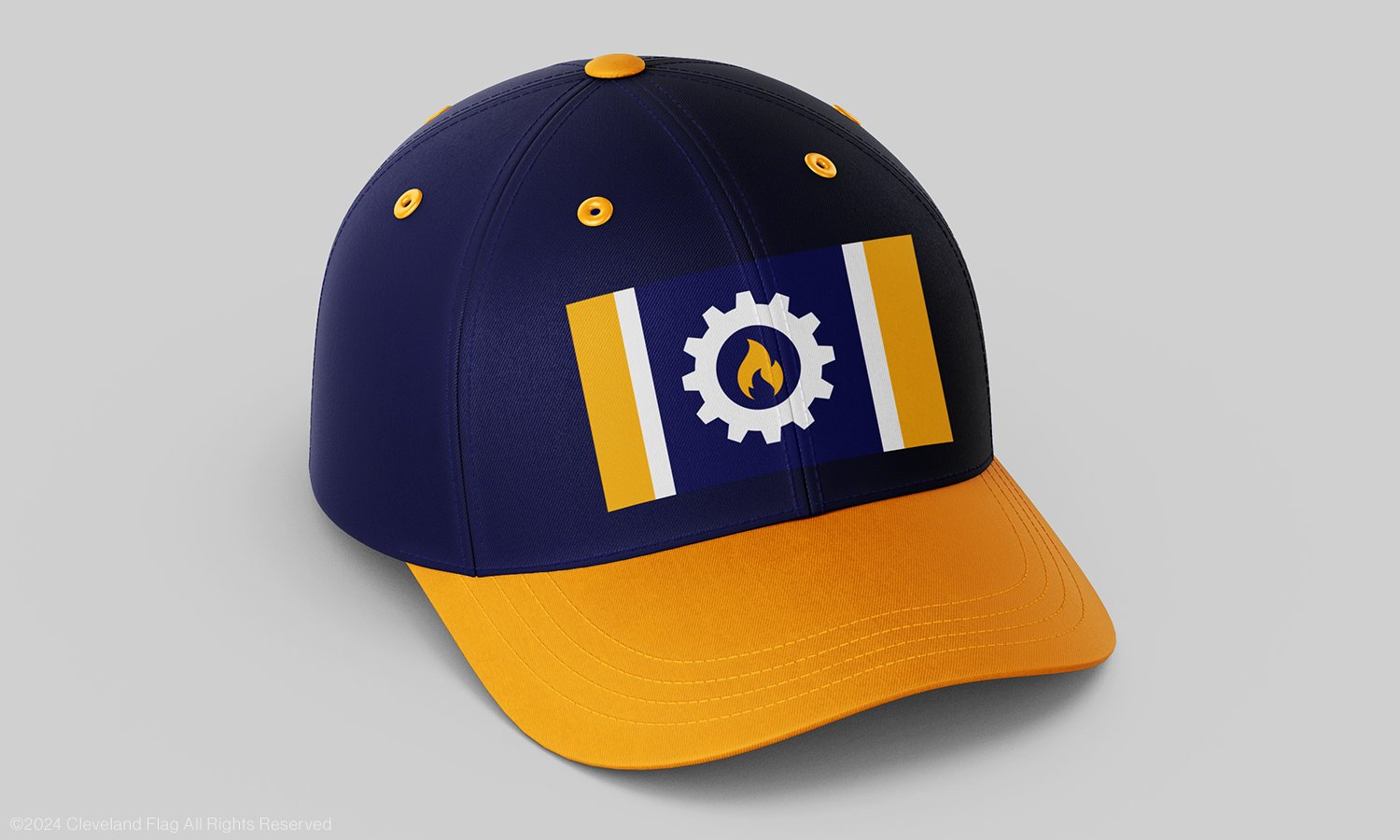
cleveland flag
about flag 20
Cleveland flag design number twenty comprises a gold flame encircled by a white gear on a field of blue, flanked by white and gold.
In the 1800s, iron shipped across the Great Lakes from Minnesota, Wisconsin and Northern Michigan met with coal from Pennsylvania and Virginia. In Cleveland, Ohio, these raw materials transformed into steel and heavy manufacturing goods. Cleveland’s paved roads, railways, the Ohio and Erie Canals, Lake Erie and the Cuyahoga River meant goods could be shipped across the country.
Cleveland, along with many Great Lakes cities, came to be known as the Factory Belt. By the middle of the 20th century, however, Cleveland steel production and heavy manufacturing slowed. The once booming Factory Belt slowed to the quiet Rust Belt. But that didn’t stop Cleveland. The comeback city reinvented itself. Today, Cleveland’s economy is known for advances in healthcare, technology, finance and education.
The twentieth Cleveland flag celebrates the city’s innovative and industrious spirit. On the new flag design, innovation and invention are represented by the color gold. White represents hope and aspiration. Blue stands for progress and growth.
The gold flame at the flag’s center represents the spirit of innovation. The flame honors past, present and future Clevelanders who’s passion, energy and commitment makes their community, city and even the world a better place. It is a symbol of the fiery passion that drives Clevelanders to bring bold, daring ideas to light. The flame burns at the center of a large gear, which represents industry.
Many new ideas and inventions started in Cleveland, Ohio. Each of the gear’s twelve teeth celebrates an innovation or innovator or an invention or inventor unique to Cleveland.
The first tooth on the gear recognizes Charles Brush, inventor of the arc light. On the evening of April 29, 1879, Brush illuminated Cleveland’s Public Square with his invention, making Cleveland the first city in the country to have outdoor electric street lights. His home was the first house in Cleveland to have electricity thanks to a wind turbine generator he invented. The second commemorates John D. Rockefeller and the Standard Oil Company, which was started in Cleveland. Rockefeller gave away millions of dollars and built buildings and parks in the city. The third honors O.P. and M.J. Van Sweringen, who developed what would become known as the Rapid Transit Authority (RTA) and built Cleveland’s signature skyscraper, the Terminal Tower (1928), so named because the tower hosts a train terminal in its lower levels. Gear tooth four is a tribute to Tom L. Johnson, who invented the see-through glass fare box for trains. After serving two terms in the U.S. House of Representatives for Cleveland’s 21st district, he was elected in 1901 and served three terms as Cleveland’s mayor. Johnson believed in affordable public transportation and low taxes. He developed the city’s mall plan which today includes the Federal Building (1910), the Cuyahoga County Courthouse (1911), Cleveland City Hall (1916), Public Auditorium (1922), the Cleveland Public Library (1925), the Board of Education Building (1930) and the Cuyahoga County Administration Building (1957). In 1904, Johnson established the country’s first comprehensive building code. He foresaw the need for public utilities and was instrumental in developing Cleveland’s municipal electrical system. The fifth recognizes George Crile, a surgeon, performed the first successful blood transfusion. He later co-founded the world-renowned Cleveland Clinic. In 1956, the Cleveland Clinic performed the first stopped-heart surgery. Later, in 2008, the hospital performed the world’s first face transplant. Gear tooth six recognizes disc jockey Alan Freed, host of the popular late-night radio show the Moondog Rock and Roll House Party, who, on July 11, 1951, became the first person to play a rhythm and blues record on a major radio station. Freed is also credited with popularizing the phrase ‘rock and roll’ on mainstream radio. Freed helped to solidify Cleveland as the home of the Rock & Roll Hall of Fame. The seventh pays tribute to the traffic signal. On August 5, 1914, the first traffic light was installed at the intersection of Euclid Avenue and East 105th Street in Cleveland. The signal had two lights, red and green, and a buzzer. Later, Clevelander Garrett Morgan invented the first three-stage traffic signal in 1923. The manually operated signal could indicate to traffic to slow down. The eighth gear tooth celebrates Cleveland as the first U.S. city to have free home mail delivery. Joseph Briggs started the service in 1863. Tooth nine celebrates the iconic comic-book character Superman, created in 1933 by Jerry Siegel and Joe Shuster while they attended Glenville High School in Cleveland. Number ten recalls Henry Sherwin and Edward Williams, who established the Sherwin Williams paint company in 1866. A year later, Sherwin invents ready-mixed paint and the resealable paint can. The eleventh honors William Day and two former slaves, Samuel Ward and J.W.C. Pennington, who, in 1893, created the first newspaper in the U.S. for African Americans. The twelfth, and last gear tooth, commemorates John Patterson Green, a Clevelander who served in public office, was an Ohio Representative and Senator. Green introduced the Ohio legislation that made Labor Day a holiday in 1890. Four years later, Labor Day was a national holiday.
The new Cleveland flag design is built on a 1:5 grid. See how this new Cleveland flag design compares to other Ohio city flags.










